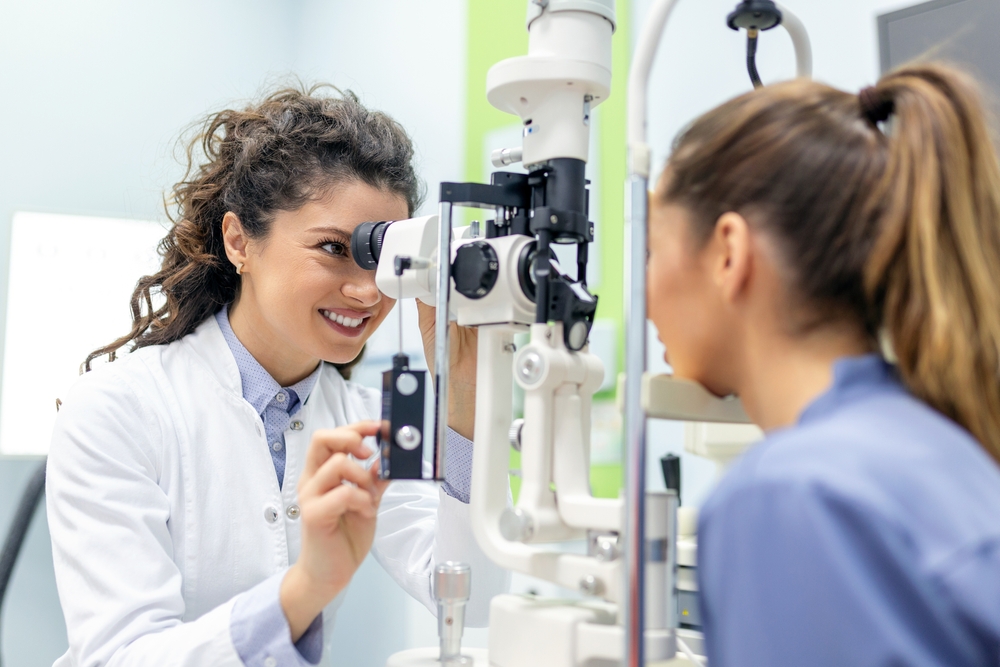In today’s digital age, many people spend countless hours in front of computer screens, whether for work or entertainment. While technology has undoubtedly improved everyone’s lives in numerous ways, it has also brought new challenges to their health and well-being.
One of the most common issues faced by computer users is eye strain, also known as computer vision syndrome. This condition can lead to discomfort, reduced productivity, and even long-term vision problems if left unchecked.
The good news is that there are several simple yet effective strategies you can implement to protect your eyes and maintain good vision while working on your computer. Keep reading to learn seven essential tips to prevent eye strain during computer work!
1. Follow the 20-20-20 Rule

One of the simplest and most effective ways to combat eye strain is by implementing the 20-20-20 rule. This rule is easy to remember and can be easily incorporated into your work routine.
Here’s how it works: every 20 minutes, take a 20-second break to look at something approximately 20 feet away from your screen. This practice helps reduce eye fatigue by allowing your eye muscles to relax and reset.
When you focus on a computer screen for a long time, your eyes are constantly engaged in close-up work, which can lead to tension and strain. By shifting your gaze to a distant object every once in a while, you give your eyes a chance to adjust and refocus, reducing the risk of eye strain and associated symptoms like headaches and blurred vision.
To help you remember to take these breaks, consider setting a timer to remind you to look away from your screen at least a few times throughout the day.
2. Adjust Your Screen Settings
The way your screen is configured can also affect your eye comfort. Take some time to optimize your display settings.
Start by adjusting the brightness of your screen. A good rule of thumb is to match your screen’s brightness to the ambient light in your workspace.
Your screen shouldn’t appear like a light source in a dark room nor look dull and hard to read in a bright environment. Next, consider the contrast settings.
Higher contrast can make text easier to read, reducing the effort your eyes need to make. Experiment with different contrast levels to find what works best for you.
3. Position Your Screen Correctly
The position of your computer screen plays an important role in preventing eye strain. Ideally, your screen should be positioned at arm’s length, or about twenty to twenty-eight inches away from your eyes.
This distance allows your eyes to focus more comfortably and reduces the strain on your eye muscles. In terms of height, the top of your screen should be at or slightly below eye level.
This positioning helps maintain good posture and reduces neck strain, which can contribute to eye discomfort.
4. Reduce Glare

Glare from your computer screen can cause significant eye strain by forcing your eyes to work harder to focus on the content. There are several ways to minimize glare.
First, consider the placement of your computer in relation to light sources. Avoid positioning your screen directly in front of or behind windows, as this can create harsh contrasts and reflections.
If possible, position your screen perpendicular to windows and other bright light sources. Using an anti-glare screen filter can be an effective solution if you can’t control the lighting in your workspace.
These filters attach to your screen and help diffuse light, reducing reflections and making it easier on your eyes.
5. Use Proper Lighting
The lighting in your workspace can have a substantial impact on your comfort during computer work. Poor lighting can cause eye strain, headaches, and even contribute to poor posture as you unconsciously adjust your body to see better.
Aim for a well-lit environment that doesn’t create excessive glare or harsh contrasts. Natural light is ideal, but if that’s not possible, try to have soft, diffused artificial lighting.
Also, avoid working in a dark room with only your computer screen for illumination, as this can cause eye fatigue and discomfort. If you’re working in an office with fluorescent lighting, which can be harsh on the eyes, consider using a desk lamp with a softer, warmer light to counterbalance the overhead illumination.
6. Use Artificial Tears
If you find that your eyes frequently feel dry or irritated during computer work, consider using artificial tears or lubricating eye drops. These over-the-counter products can help alleviate dryness and provide relief from eye strain symptoms.
When trying to choose a type of artificial tears, it’s best to choose preservative-free varieties if you plan to use them frequently. These are gentler on the eyes and can be used more often without causing irritation.
Keep in mind that while artificial tears can provide relief, they’re not a substitute for addressing the underlying causes of eye strain. Use them in combination with other preventive measures for the best results.
7. Get Regular Eye Exams

Last but certainly not least, make sure to schedule regular comprehensive eye exams. Even if you don’t wear glasses or contact lenses, annual check-ups are crucial for maintaining good eye health and catching any potential issues early.
During these exams, your eye care professional can assess how well your eyes are coping with computer work and may recommend specific solutions for your needs. This might include computer glasses, which are designed to reduce eye strain during screen time, or updates to your current prescription if you already wear corrective lenses.
Additionally, your eye doctor can check for any underlying conditions that might be contributing to eye strain and provide guidance on how to best protect your vision in the digital age.
Get Help With Digital Eye Strain
Implementing these tips can significantly reduce eye strain and improve your overall comfort during computer work. Remember, protecting your eye health is an ongoing process that requires consistent effort.
By creating an eye-friendly work environment and adopting healthy visual habits, you can maintain productivity without compromising your eye health. Start by incorporating one or two of these tips into your daily routine and gradually add more as they become habitual.
Are you experiencing symptoms of digital eye strain? Schedule an appointment at Blaine Eye Clinic in Blaine, MN, today!





